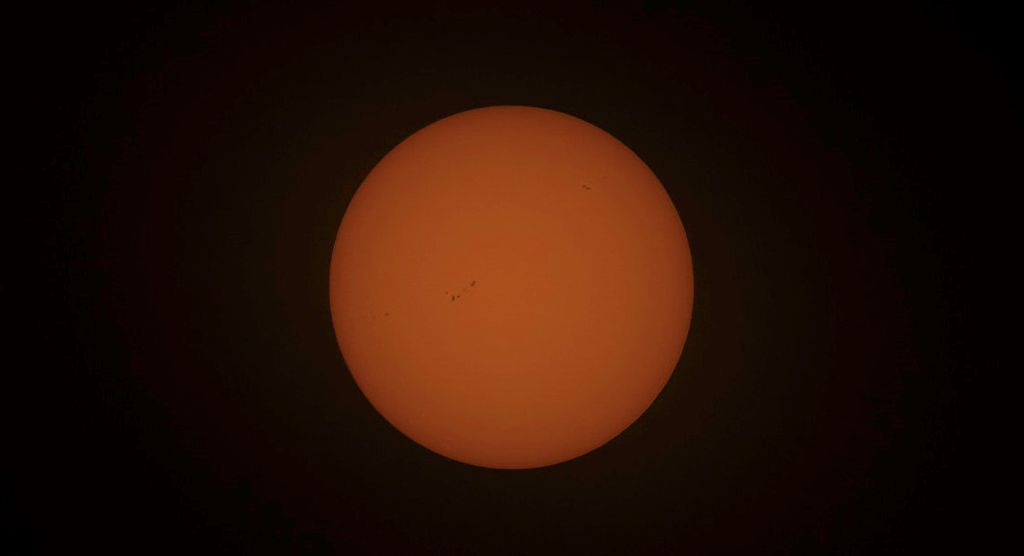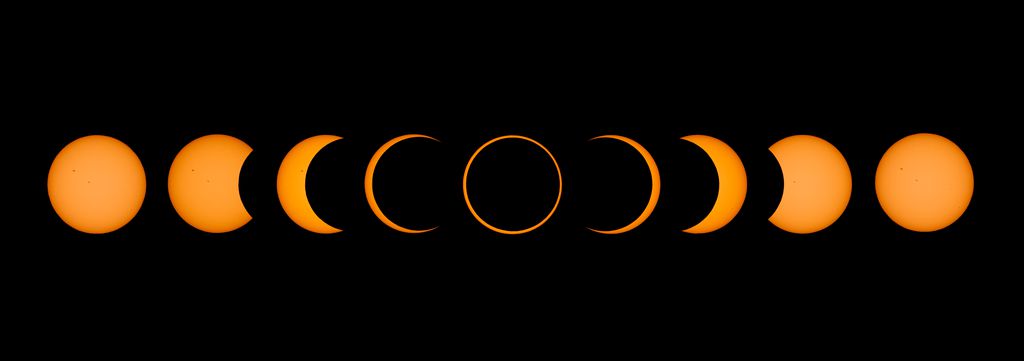Hello!
I've just started some solar work in preparation for the upcoming eclipses. Here's the first attempt with a Canon 90D/ 100-400 lens and a Thousand Oaks filter. It's been through Topaz Sharpen. have no idea if it's a reasonable image or not. Any suggestions would be appreciated.
Mike
 |
You cannot like this item. Reason: "ANONYMOUS".
You cannot remove your like from this item.
Editing a post is only allowed within 24 hours after creating it.
You cannot Like this post because the topic is closed.
I like it. I don't think I would expect any more detail than that, with a 400mm lens and APS-C sensor.
But, you should take into consideration buying a Mak-Cassegrain, they are the best budget option (I believe) for super closeup planetary and solar work, especially lunar, and they're even better when paired with small pixel astronomy cameras. I've seen some super cheap Maks on CloudyNights classifieds.
|
You cannot like this item. Reason: "ANONYMOUS".
You cannot remove your like from this item.
Editing a post is only allowed within 24 hours after creating it.
You cannot Like this post because the topic is closed.
I like it. I don't think I would expect any more detail than that, with a 400mm lens and APS-C sensor.
But, you should take into consideration buying a Mak-Cassegrain, they are the best budget option (I believe) for super closeup planetary and solar work, especially lunar, and they're even better when paired with small pixel astronomy cameras. I've seen some super cheap Maks on CloudyNights classifieds.
Oh, I'm sure I can easily do better - problem is getting to eclipse site via human mailing tube.
|
You cannot like this item. Reason: "ANONYMOUS".
You cannot remove your like from this item.
Editing a post is only allowed within 24 hours after creating it.
You cannot Like this post because the topic is closed.
Oh, I understand, then I think you'll do fine with the lens. These are 2 examples of partial solar eclipses taken with your lens https://www.astrobin.com/c8bwva/https://www.astrobin.com/j76prc/
You should get Photoshop if you don't have it, it's a must for all photographers.
|
You cannot like this item. Reason: "ANONYMOUS".
You cannot remove your like from this item.
Editing a post is only allowed within 24 hours after creating it.
You cannot Like this post because the topic is closed.
@Mike Butorac
That's a decent image, and not bad at all for your first. It does seem a tad dark to me. What was you shutter speed, aperture and ISO? I do think you should be able to pull some more detail out of it though, and I bet your biggest issue is "slowish" shutter speeds due to the thousand oaks filter.
I highly recommend replacing it with some baader astrosolar PHOTO film OD 3.8 (not the astrosolar SAFETY film OD 5.0). I used a thousand oaks full aperture solarlite polymer filter during the annular eclipse and my shutter speeds were 1/10-1/50th at F13 ISO 640. This is pathetically slow, and I got a lot of motion blur in my images from the wind.
Luckily, the baader astrosolar PHOTO film arrived the day before I left, and I made a DIY filter with it and used it on my backup camera. This film is ~12 stops vs 15.5 stops so my shutter speed was 1/6400th F10 ISO 100. I shot handheld and the images were much better than my primary setup on a tracking mount. Do know that the baader PHOTO film is NOT viewing safe. You cannot look through your optical viewfinder, only live view. But it is perfectly safe for the camera. It just blocks less light than normal viewing safe filters.
As far as your camera and lens, they should work just fine. I used a Canon R5, an EF 100-400 IS II lens, and a 1.4x iii extender. This is 560mm effective focal length and your setup is 640mm effective focal length thanks to your aps-c sensor (plus you don't get the negative affects of using a teleconverter). Using the baader film is the biggest benefit. The MUCH faster shutter speeds will help eliminate motion blur and might even help reduce some atmospheric distortions. I think you will get a lot more detail using it.
These images were captured handheld using the baader astrosolar photo film at 560mm, 1/6400th F10 ISO 100 and processed in lightroom (the last image was processed in Photoshop and lightroom).....
Here is a link to the full resolution image to see what kind of detail you can expect...
https://www.astrobin.com/full/1mctw7/0/?mod=&real=


 |
You cannot like this item. Reason: "ANONYMOUS".
You cannot remove your like from this item.
Editing a post is only allowed within 24 hours after creating it.
You cannot Like this post because the topic is closed.
to create to post a reply.







